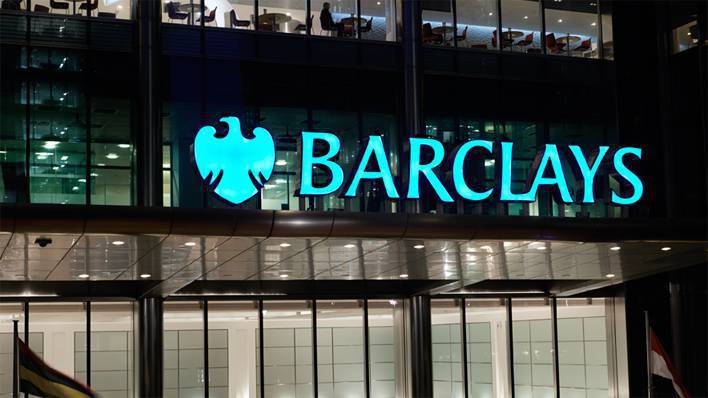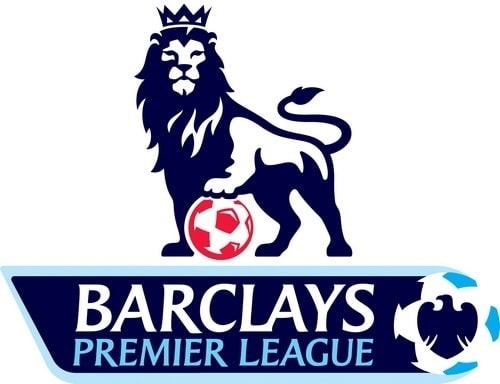The Marketing mix of Barclays analyses the 7Ps of Barclays which includes the Product, Price, Place, Promotion, people, physical evidence and process of Barclays. Barclays is a global company of British origin. This multinational corporation is a public limited company and deals in finance and banking. It was founded in 1690 and has its current headquarters in London. Barclays is a universal bank undertaking wholesale, retail, investment, and management operations.
Although it is one of the leading banking authorities in the United Kingdom, it faces stiff competition from other banks. Its main competitors in this field are as follows.
- HSBC Holdings PLC
- Lloyds Banking Group PLC
- The Royal Bank of Scotland Group PLC
About Barclays
- Type: Universal bank
- Industry: Financial services
- Founded: 1690
- Founders: John Freame and Thomas Gould
- Headquarters: London, England
- Area served: Worldwide
- Key people: C. S. Venkatakrishnan – CEO
- Number of employees: Over 83,300
Table of Contents
Barclays Product Strategy
Barclays has an extensive range of products and services, and its trained officials are committed to delivering banking solutions with the best possibilities, irrespective of whether it is a multinational company, financial institution, partnership business, or sole proprietorship business. It was the first to unveil an ATM in 1967 and has acquired numerous corporate houses like The Woolwich and British Linen Bank.
The new Product Mix of Barclays in 2024 is as follows (Source).
- Retail Banking: Current accounts, Savings accounts, Personal loans, Mortgages, Credit cards, Insurance products
- Wealth Management: Investment management, Wealth advisory services, Private banking, Wealth planning, Estate management
- Corporate Banking: Business loans and financing, Commercial mortgages, Corporate credit cards, Treasury services, Risk management services, Trade Finance, Payment processing services
- Investment Banking: Mergers and acquisitions (M&A) advisory, Debt and equity underwriting, Market making and trading, Structured Finance, Derivatives and risk management, Research and analysis
- International Banking: Cross-border financing, Foreign exchange services, International trade services, Global cash management
- Online and Digital Services: Online banking, Mobile banking apps, Digital wallets and payments, Online investment platforms
Barclays Place Strategy
Barclays Bank serves a worldwide list of clients and businesses, primarily small firms in nearly fifty countries. It has a vast network of distribution channels comprising channels4,750 branches, of which 1,600 are situated in the United Kingdom. Most of its branches have ATMs that are operational twenty-four hours per day.
Using debit cards at these ATMs for customers of Barclays and its tie-up banks is free in the United Kingdom market, although a minimum fee is charged for customers in other countries. As a member of the Global ATM Alliance, it allows customers free access to its ATMs. Domestically, the bank has a tie-up with Post-offices and offers personal banking services through its post-offices branches. It has digital services that help manage banking transactions through electronic and online distribution channels, like Business Portal, Barclay’s iPortal, and Internet Banking.
Here’s the place strategy of Barclays.
- Global Presence: Barclays has a significant global footprint, operating in over 40 countries, which allows it to serve customers worldwide and cater to the needs of multinational corporations, high-net-worth individuals, and local customers across various regions.
- Branch Network and Physical Locations: In the U.K., Barclays maintains a comprehensive network of branches and offices that facilitate personal banking services, consultations, and corporate banking solutions, although the number of physical branches has been adjusted in response to changing customer behaviors towards digital banking.
- Digital and Online Banking: Barclays has heavily invested in digital banking platforms, including online banking and mobile applications, enabling customers to access banking services conveniently from anywhere, which reflects a strategic shift towards digital-first customer engagement.
- Strategic Partnerships and Alliances: Barclays partners with fintech companies, financial institutions, and non-financial entities to expand its service offerings and accessibility, leveraging these partnerships to introduce innovative solutions and penetrate new markets.
- Focus on Key Financial Centers: While maintaining a global presence, Barclays strategically focuses on vital financial centers such as London, New York, and Hong Kong for its investment banking division, ensuring proximity to major clients and markets to offer tailored financial solutions and advisory services.
Barclays Pricing Strategy
Barclays has a market of nearly 48 million customers, and its various operations demand a better and cost-effective pricing and cost policy acceptable to its customers and various business institutions. It has decided to manage its expenses to pursue improved profits and revenues. It, therefore, has laid down a proposition for cutting its costs annually to $24.5 billion, and this means a reduction of 25% in operating costs.
It will lead to net improvements and free a bank loan a significant portion of its capital. The bank has levied a minimum interest rate on its savings and premium accounts to make money and generate revenues. Its competitive pricing policy has resulted in unlimited withdrawal transactions from current accounts by a customer for free, competitive interest rates that must be paid quarterly. Barclays has also been trading in fixed-income securities, resulting in a high net revenue increase revenue. It also offers mortgages and loans at reasonable rates to maintain brand loyalty among its customers.
Barclays employs a multifaceted pricing strategy that reflects its position as a leading financial services provider, ensuring competitiveness while catering to a diverse client base, target customers, small businesses, and consumers. Here’s how Barclays strategically approaches pricing:
- Value-Based Pricing: Barclays adopts a value-based pricing approach for its wealth management and investment banking services. It sets prices based on the perceived value delivered to high-net-worth individuals and institutional clients. This strategy ensures that clients receive personalized, high-quality service that justifies the premium pricing, aligning with their expectations for exclusivity and tailored financial advice.
- Competitive Pricing: In highly competitive markets such as retail and corporate banking, Barclays carefully benchmarks its pricing against competitors to ensure its products and services remain attractive. This involves regular analysis of competitors’ fees, interest rates, and service charges, allowing Barclays to adjust its pricing models to offer better value to customers, thereby enhancing customer retention and attracting new clients.
- Freemium Models for Digital Services: Recognizing the shift towards digital banking, Barclays often employs a freemium pricing strategy for its online and mobile banking services. Essential services are free to encourage adoption and usage. In contrast, premium features or services—such as advanced financial planning tools or international transactions—are offered at a fee. This strategy promotes digital engagement and allows Barclays to cross-sell other financial products.
- Tiered Pricing for Diverse Customer Segments: Barclays segments its customer base into various tiers, from everyday retail customers to elite private banking clients, and adjusts its pricing accordingly. This tiered pricing structure enables Barclays to cater effectively to each segment’s unique needs and financial capabilities, offering differentiated products and services that range from essential account functions to sophisticated investment solutions.
- Dynamic Pricing for Loan and Credit Products: The bank employs dynamic pricing models for its lending and credit products, where interest rates and fees are determined based on various factors, including market conditions, the borrower’s creditworthiness, and the level of risk associated with the loan. This flexible pricing strategy allows Barclays to manage its risk exposure while offering competitive rates to customers.
Barclays Promotion Strategy
Barclays has been one of the oldest financial institutions. With changing times, it has recognized the concept of marketing, sales, and advertising to make its bank and various products and services visible to its customers. It has used every tool to create ads that help in its sales and show the company to its advantage.
Its commercials are informative and shown via television, print media, and its official website, providing relevant information. It has also undertaken numerous public relations and sponsorship programs to maintain brand equity and increase value. Barclays sponsored the English Premier League from 2001 till recently in 2016.
It also sponsored The Football League from 1987 to 1993 and the Dubai Tennis Championship in 2008. It became a sponsor for Barclays Cycle Hire from year 2010 till 2015. In 2013, M.S. DM.S. was appointed as a brand ambassador for the Barclays Premier League in India.
Some Recent Video ads and Print ads for Barclays are:
Barclays People Strategy
The “People” marketing aspect of Barclays’ Service Marketing Mix is a critical component that significantly influences customer experiences and the bank loan’s overall brand perception. Here’s a detailed look at how Barclays approaches the “People” marketing element:
- Highly Skilled Workforce: Barclays invests in attracting, developing, and retaining a highly skilled workforce. Employees across all levels receive rigorous training and continuous professional development opportunities. This ensures that the team has the expertise to provide high-quality financial advice, customer service, and innovative solutions to meet the diverse needs of their global client base.
- Customer-Centric Culture: Barclays fosters a customer-centric culture within its organization, emphasizing the importance of understanding and meeting customer needs. Employees are encouraged to take a proactive approach to customer service, ensuring that all interactions are handled with care, professionalism, and a personalized touch, which enhances customer loyalty and satisfaction.
- Diversity and Inclusion: Recognizing the value of diverse perspectives, Barclays is committed to promoting diversity and inclusion within its workforce. The bank has implemented various initiatives to support gender equality, cultural diversity, and inclusion of people with disabilities and LGBTQ+ employees. This diverse workforce enables Barclays to understand better and serve its equally diverse customer base.
- Ethical Conduct and Professionalism: Barclays strongly emphasizes ethical conduct, integrity, and professionalism. The bank has established ethical standards and conducts regular training to ensure all employees understand and adhere to these principles. This commitment to ethical practices builds trust with customers and stakeholders and contributes to the bank’s long-term sustainability.
- Empowerment and Responsibility: Employees at Barclays are empowered to make decisions that can improve customer experiences and resolve issues efficiently. This level of empowerment is balanced with accountability, ensuring that employees take responsibility for their actions and decisions. Barclays enhances its service delivery and customer satisfaction by fostering a sense of ownership and responsibility.
Barclays Process Strategy
The “Process” component of the Service Marketing Mix for Barclays encompasses the bank’s methods and procedures to deliver its services efficiently and effectively to new customers. This aspect ensures customer satisfaction, operational excellence, and competitive advantage. Here’s an overview of how Barclays manages its process dimension and digital marketing strategy here:
- Streamlined Account Opening and Loan Approval Processes: Barclays has optimized its account opening and loan approval processes to be as seamless and customer-friendly as possible. Barclays uses online platforms and digital verification to reduce paperwork and wait times, making these processes quicker and more convenient for customers. This digital-first approach caters to the modern consumer’s expectations for speed and efficiency.
- Digital Transformation in Service Delivery: Barclays has embraced digital transformation, investing heavily in technology to streamline its service delivery. This includes the development of mobile banking apps, online banking platforms, and digital investment tools. These technologies enable customers to conduct transactions, manage accounts, and access financial services remotely, enhancing convenience and accessibility.
- Personalized Customer Service: Understanding the diverse needs of its customer base, Barclays employs a process of customized customer service. This includes using CRM (Customer Relationship Management) systems to tailor banking and financial advice to individual customer profiles. Personal bankers and advisors are available to provide customized financial solutions, ensuring that customer needs are met to reflect their circumstances and goals.
- Robust Risk Management and Compliance Procedures: Barclays follows stringent risk management and compliance procedures to protect customer assets and ensure the bank’s operations align with regulatory standards. This includes processes for fraud detection, anti-money laundering (AML) checks, and cybersecurity measures to safeguard customer information and transactions. These processes are critical for maintaining customer trust and the integrity of the bank’s operations.
- Feedback Loops and Continuous Improvement: Barclays has established feedback loops that allow it to gather and analyze customer feedback on its services and processes. This feedback drives continuous improvement initiatives, ensuring that the bank’s processes evolve to meet changing customer expectations and address any dissatisfaction areas. Regular training for staff on new systems and procedures ensures that the bank’s service delivery remains at the forefront of industry best practices.
Barclays Physical Evidence Strategy
The “Physical Evidence” element of the Service Marketing Mix refers to the tangible and intangible aspects customers associate with a service before, during, and after its consumption. For a financial institution like Barclays, physical evidence plays a crucial role in shaping perceptions of trustworthiness, professionalism, and quality of service among current operations potential customers. Here’s how Barclays manages its physical evidence:
- Branding and Corporate Identity: Barclays’ branding and corporate identity are potent forms of physical evidence. The distinctive Barclays logo, corporate colors (blue and white), and branding materials convey a sense of stability, reliability, and professionalism. These elements are consistently applied across all customer touchpoints, from branches to marketing materials, websites, and digital apps, helping to create a cohesive and recognizable brand image.
- Branch Design and Layout: The design and layout of Barclays’ branches serve as physical evidence of the bank’s approach to customer service and its brand values. Branches are designed to be welcoming and secure, with clear signage, comfortable waiting areas, and private consultation rooms. This physical environment enhances customer experience, reflecting the bank’s commitment to accessibility, confidentiality, and customer care.
- Technology and Equipment: Barclays’ investment in technology and equipment, such as ATMs, self-service kiosks, and mobile banking apps, serves as physical evidence of its commitment to innovation and convenience. The functionality and user-friendliness of these technologies enhance the customer’s banking experience, reinforcing Barclays’ image as a forward-thinking financial services provider.
- Customer Communications: Physical evidence includes the quality and clarity of customer communications, such as statements, reports, and informational brochures. Barclays ensures that these materials are professionally produced, easy to understand, and visually consistent with the bank’s branding. This attention to detail in communications reinforces the perception of Barclays as a trustworthy and customer-focused bank.
- Online Presence and Digital Platforms: Barclays’ online presence and digital platforms are vital forms of physical evidence in the digital age. The bank’s website, online banking interface, and mobile apps are designed with a clean, intuitive layout, offering a seamless user experience. High-quality digital interfaces signal Barclays’ commitment to providing convenient and secure digital banking services.
- Employee Appearance and Behavior: Lastly, the appearance and behavior of Barclays employees serve as physical evidence of the bank’s service quality and corporate culture. Employees are expected to present themselves professionally and interact with customers in a friendly, knowledgeable, and respectful manner. This direct interaction significantly influences customer perceptions of the bank.
Liked this post? Check out the complete series on Marketing Mix


